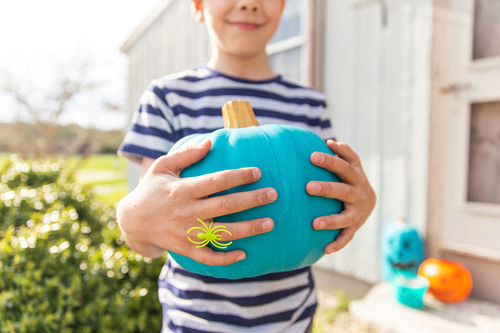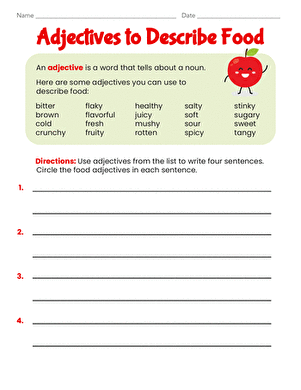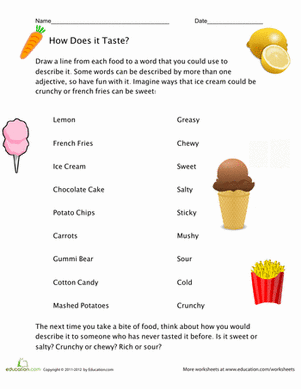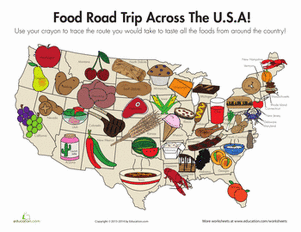Science project
Forest Food Pyramid Project
In this activity, you’ll create a food pyramid that shows what eats what in the forest. First, you’ll do some research on the plants and animals that live in your area to discover what food pyramids are out there in your local forests. From tiny plants to giant hunters, create a forest food web and discover what’s on the menu in the forest.
Producers
At the bottom of the food pyramid, you have the producers. Plants are producers. This means that they make their own food through photosynthesis. Their leaves turn light, air, and water into food through a process called photosynthesis.
What plants do the animals in your area like to eat? Think about the plants that live in the wild areas around your home. If you live in a coniferous forest, you’ll find the seeds and needles of coniferous trees and berries from bushes. In a deciduous forest, you’ll find broad-leafed trees and shrubs. Take a walk in a local state park and bring a plant identification book along. Can you identify some of the plants that you see?
Primary Consumer
A consumer is an animal that eats other living things in the forest. For instance, a squirrel might munch on some nuts, seeds, or plants. It’s called a consumer, and since it eats plants, it’s called the primary consumer. Animals that only eat plants are called herbivores. There are many herbivores, both large and small. Caterpillars eat leaves, and so do deer!
As you walk through the forest around your home, can you see any clues that tell you what animals like to eat the plants that you found?
Secondary Consumer
Now we come to the meat-eaters, or carnivores. These animals eat other animals. Animals that eat both plants and animals are called omnivores. “Omni” means “all” or “everything.”
What animals like to eat squirrels? Foxes, hawks, and raccoons are some examples. These animals are called secondary consumers. There are many animals that hunt other animals for food. Animals that hunt are often secretive, so you might not see these animals as often as you see primary consumers. Use your animal book and do some research. What kinds of secondary consumers live in the places around your home?
Ultimate Consumer
Eventually, the food pyramid reaches the top. There’s an animal there that doesn’t get hunted by many other animals. That animal is the ultimate consumer, or the top predator. There are not very many of these animals.
A predator is an animal that hunts for other animals. In some food chains, this large predator might be a wolf or a cougar. In a bird food chain, it could be an animal such as an eagle.
What are the top predators in your area? What do they eat? Can you think of anything that would eat them or hunt them?
Food Webs and Food Chains
In real life, there are a lot of food chains. A food chain is a line-up of plants and animals that shows you who eats what. All of these food chains weave together like a web. This is called the food web.
If you’re a prey animal, many animals hunt for you. If you’re a predator, you might hunt for many animals. If you’re an herbivore, you likely eat more than one type of plant. Even plants are part of the food web, because they eat the nutrients from dead plants and animals. Some animals help plants access these nutrients. They’re called the decomposers, and their job is to break things down. Worms are a good example of a decomposer.
Sometimes you might also hear the term “food pyramid.” For example, a big bird needs to eat many rodents to survive, and the rodents need to eat many insects. The inscects need to eat a lot of grass. As you go down each level of the food chain – or each trophic level – you’ll find that it takes more and more of each type of animal or plant to feed the next level up. It takes a lot of grass to feed the insects that feed the rodents that feed the hawks (the ultimate consumer).
Problem:
Create a forest food web and discover the connections between animals that live in your area as well.
Materials
- 8-inch square piece of white cardstock paper
- Colored pencils
- Ruler
- Scissors
- Transparent tape
- Plant book for your area
- Animal book for your area
- Wild place to do research
Procedure
- Now that you’ve explored the plants and animals near your home, let’s build a forest food pyramid! You can print out the template here and get started.
- From bottom to top, label the four parts of one triangle with the following names: producer, primary consumer, secondary consumer, ultimate consumer.

- Now it’s time to choose your characters. When you walked in the forest, what food chains did you see? Write a list of the animals and plants that you saw, and see if any of them fit together into a food chain. Sort them into producers, primary consumers, secondary consumers, and ultimate consumers.
- For example: In a forest, one food chain might be a bird food chain: a plant makes leaves, a caterpillar eats the leaves, a small bird eats the caterpillar, and a hawk eats the small bird. Another food chain could involve mammals and reptiles. A plant makes seeds, a mouse eats the seeds, a snake eats the mouse, and a coyote eats the snake.
- From bottom to top, label the four parts of the second triangle with the names of the plants and animals on your food chain. You’ll begin with the plants at the bottom and put the name of the top predator at the top.
- On a third triangle, draw a picture of each plant or animal.
- To make your forest food web, cut along the fold line between the third triangle and the fourth triangle. The fourth doesn’t have any markings on it yet. Overlap the unmarked triangle and the third triangle and place tape on it where it overlaps. You’ve made a food pyramid!

It’s amazing how many connections there are between different plants and animals in the forest. How many food pyramids can you create for your area?
Education.com provides the Science Fair Project Ideas for informational purposes only. Education.com does not make any guarantee or representation regarding the Science Fair Project Ideas and is not responsible or liable for any loss or damage, directly or indirectly, caused by your use of such information. By accessing the Science Fair Project Ideas, you waive and renounce any claims against Education.com that arise thereof. In addition, your access to Education.com's website and Science Fair Project Ideas is covered by Education.com's Privacy Policy and site Terms of Use, which include limitations on Education.com's liability.
Warning is hereby given that not all Project Ideas are appropriate for all individuals or in all circumstances. Implementation of any Science Project Idea should be undertaken only in appropriate settings and with appropriate parental or other supervision. Reading and following the safety precautions of all materials used in a project is the sole responsibility of each individual. For further information, consult your state's handbook of Science Safety.












